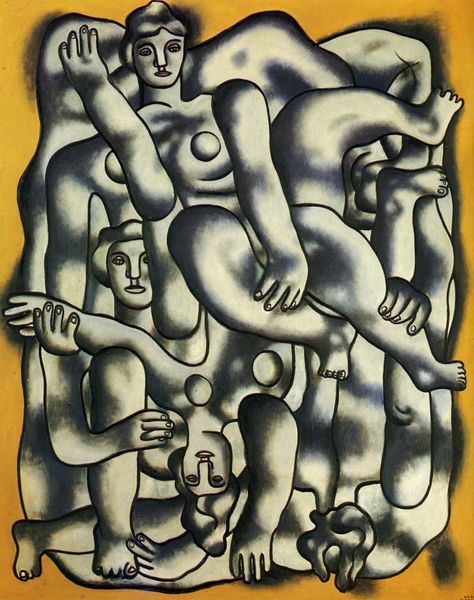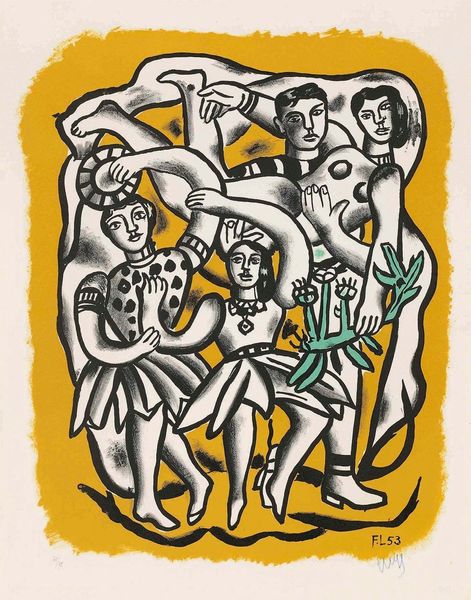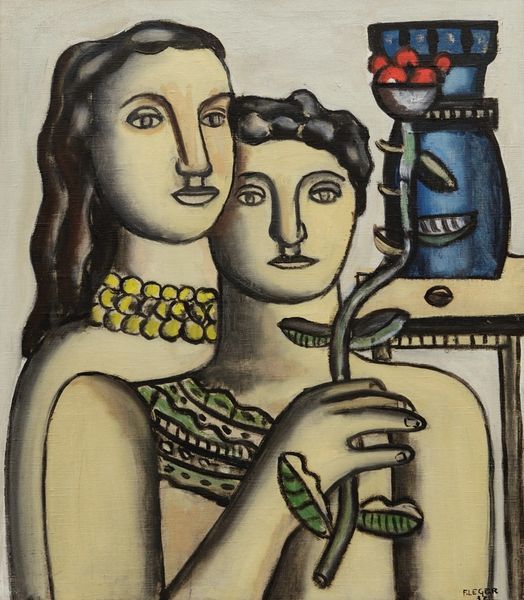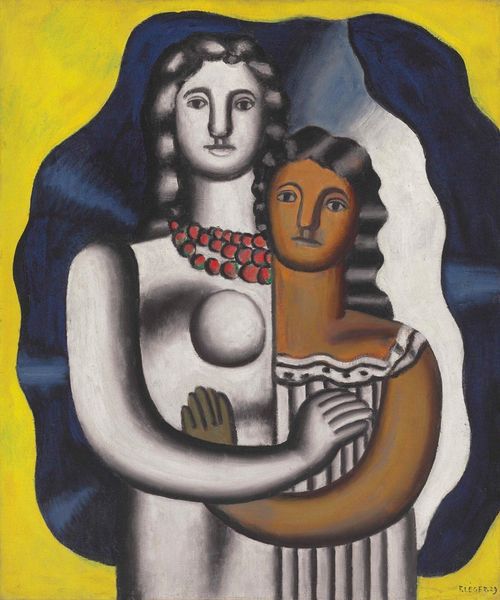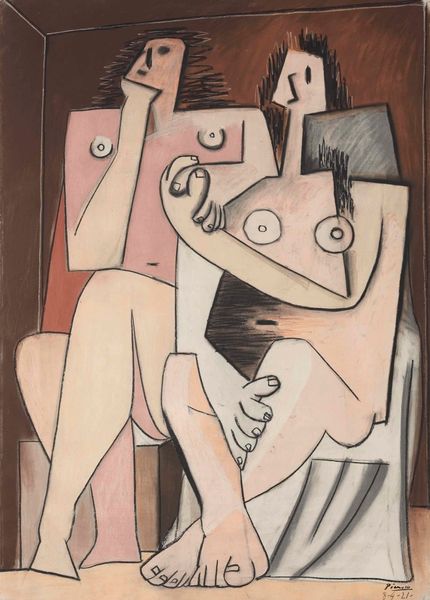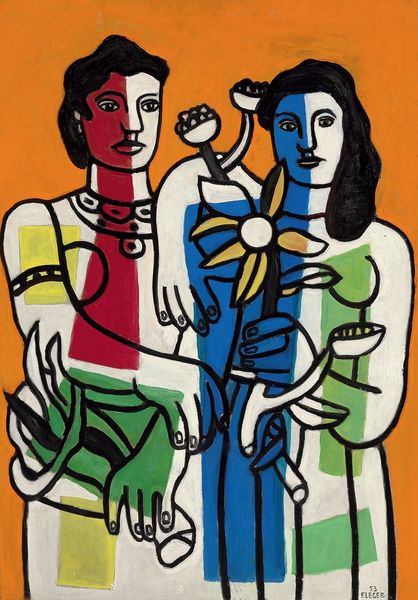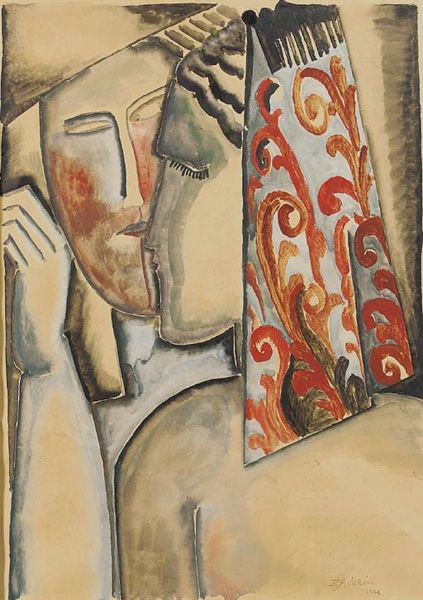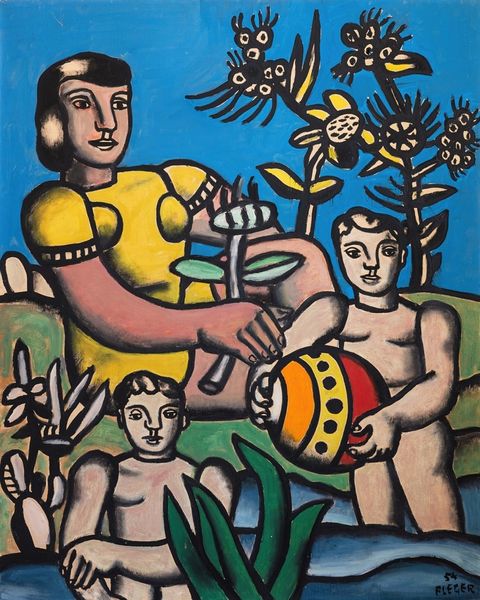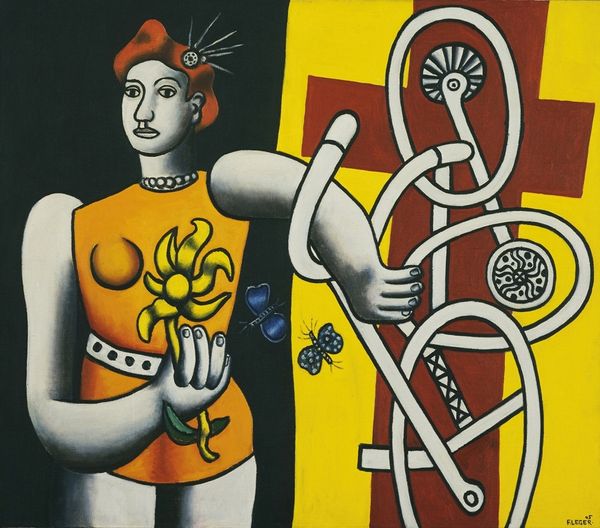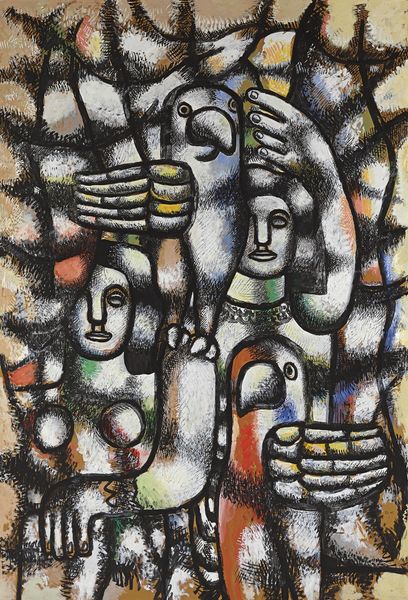
Copyright: Modern Artists: Artvee
Editor: Fernand Léger's "Les Trois Soeurs" from 1951 is certainly... arresting. It's a mixed-media painting of three figures, rendered in bold lines and a somewhat unsettling style. What’s particularly striking to me is the way Léger seems to flatten the figures and abstract their forms, almost like they're made of industrial materials. What strikes you about this work? Curator: The flattened forms and the reduction of human figures to almost mechanistic components highlight Léger’s deep engagement with the industrial age and its impact on humanity. He’s not just representing figures; he’s investigating how mass production and the dominance of machines were reshaping social interactions and even the human body itself. Editor: So, the choice of, say, these simplified shapes is directly linked to an interest in industry? Curator: Precisely! Notice how the bodies are almost uniform, nearly interchangeable. This challenges traditional notions of individual expression and artistic skill. Instead, Léger seems more interested in the collective experience, the social context shaped by labor and technology. The ‘sisters’ become more like products themselves, hinting at consumerism's early creep into social consciousness. Editor: That’s a bit bleak! But, looking again, I see what you mean about challenging traditional views. So how do we reconcile this, like, manufactured aesthetic with something as seemingly natural as family? Curator: That tension is precisely what Léger explores. He juxtaposes the organic with the mechanical to question the perceived boundaries between nature and artifice, high art and the everyday objects produced en masse. This tension encourages us to consider how we ourselves are shaped by our material surroundings and labor. Editor: So, it's not just *what* is depicted, but *how* it's made and *why*, which shows a new view on consumerism's emergence? It sounds like the way the work is produced—the “materials” he uses, not just pigment, but also industrial ideas—that are important. Curator: Exactly! By examining the means of production, Léger pushes us to look critically at the world we’ve built and its impact on human relations. Editor: I guess that really reframes my initial discomfort with this piece! Curator: Indeed. Considering process helps appreciate the broader social and economic issues these types of art brings forward.
Comments
No comments
Be the first to comment and join the conversation on the ultimate creative platform.

